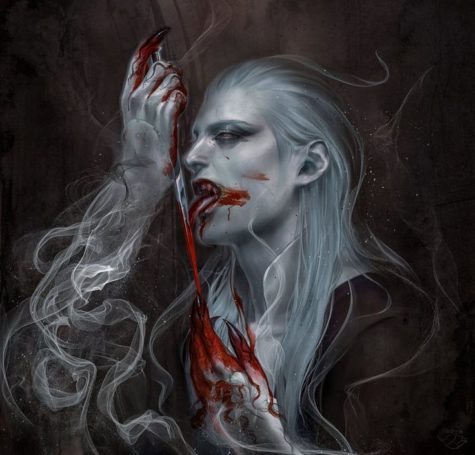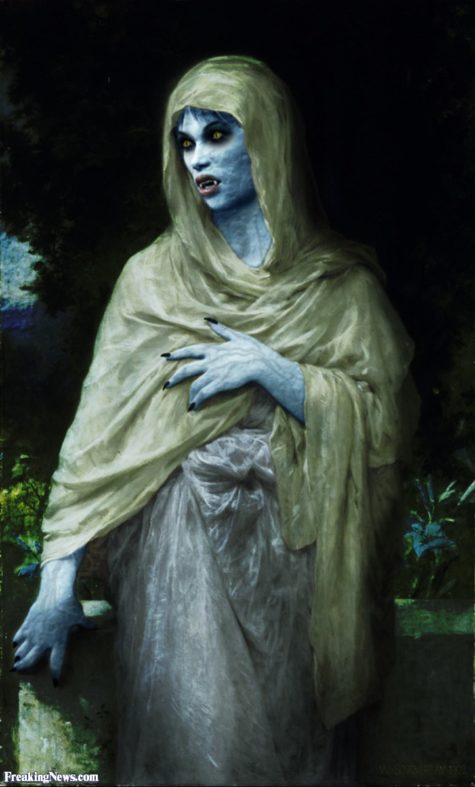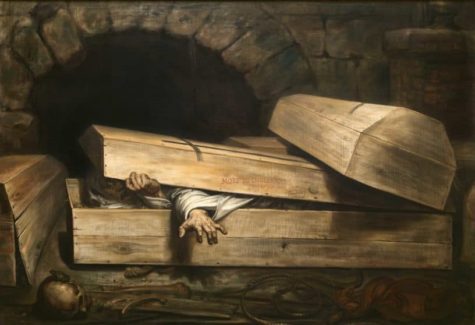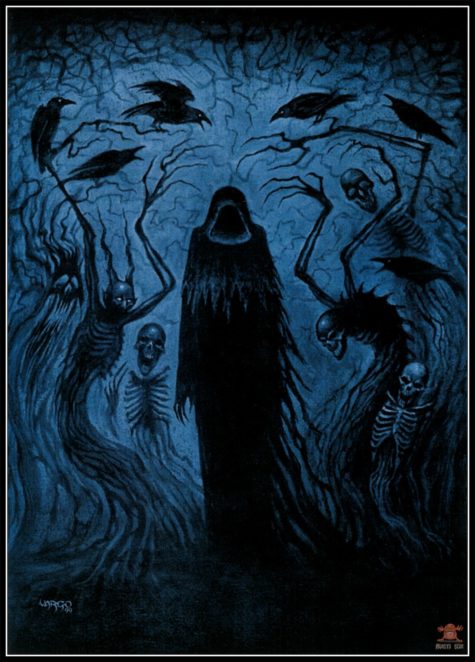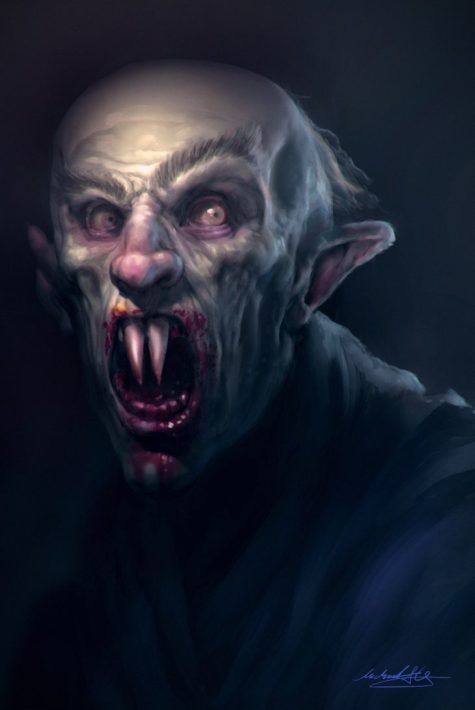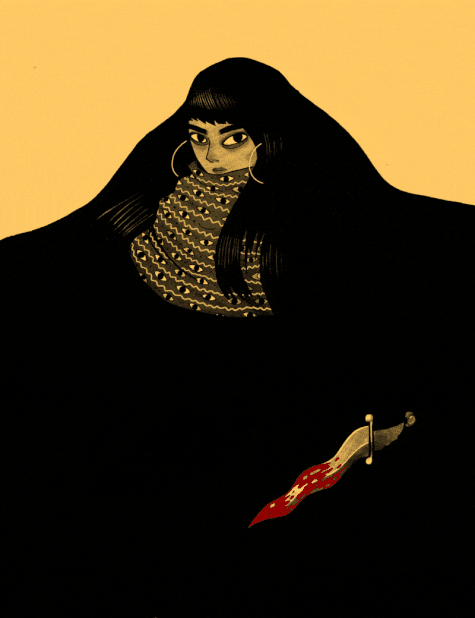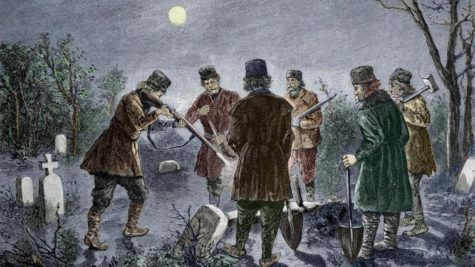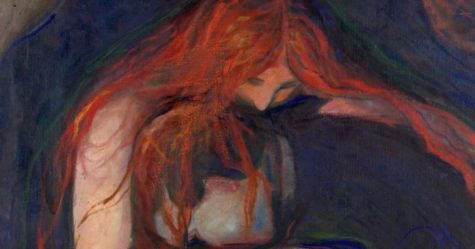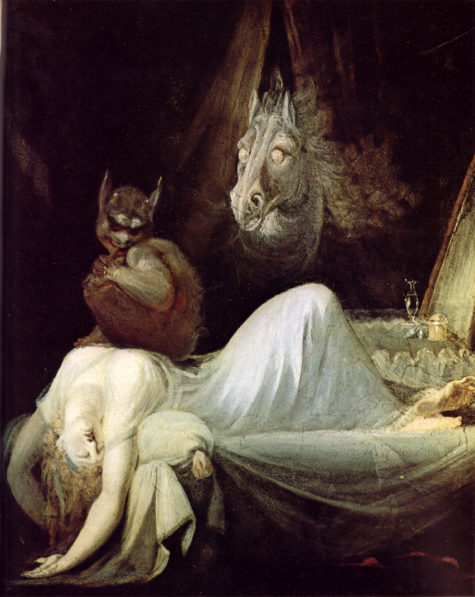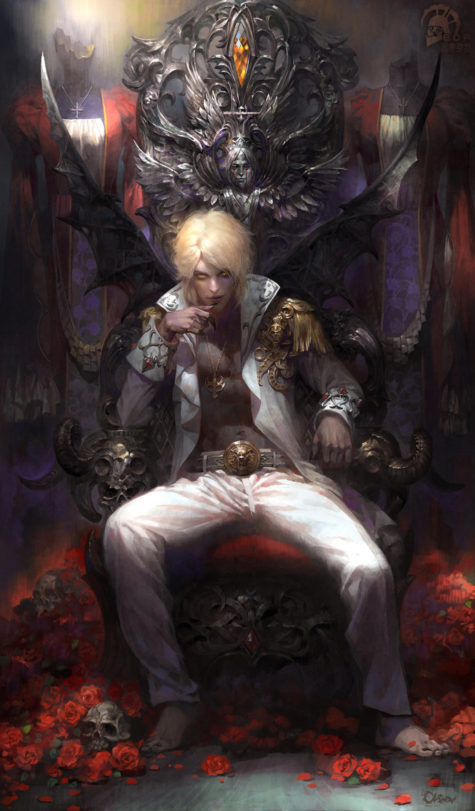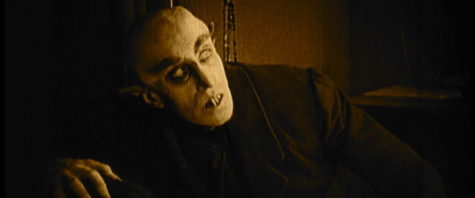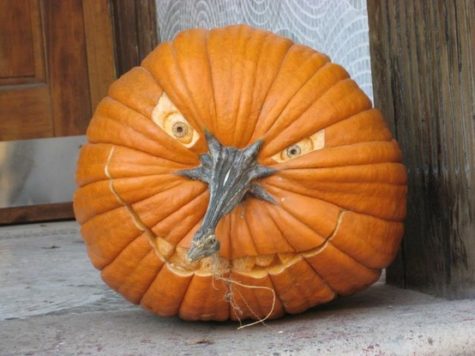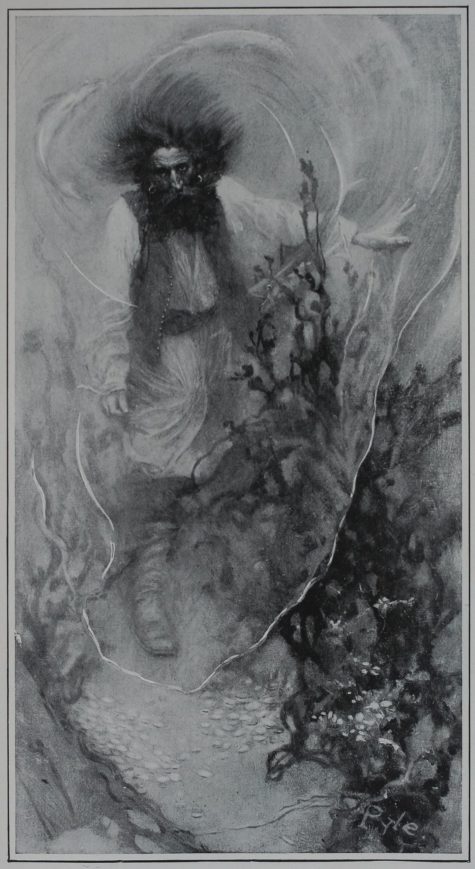Vampires
No after-death spirit retains as much fascination for the living as does the vampire. Popularly known as the un-dead, many understand vampires to exist on a plane somewhere between the realms of the living and the dead. Are vampires tortured souls of the dead, compelled to feed upon the living? Or are they souls rewarded with eternal life, able to achieve the alchemist’s ultimate fantasy without spending endless hours shut up in a laboratory?
Who or what exactly are vampires? Interpretations differ; “vampire” is a catch-all word that encompasses many concepts. However, one quality is held in common by all vampires: they suck vitality from others.
The most notorious literary and cinematic vampires, like Bram Stoker’s Dracula, Sheridan Le Fanu’s Carmilla, or the inhabitants of Anne Rice’s novels, are blood-suckers. Some vampires kill their victims by draining them of all their blood immediately. More sensuous vampires prolong the process: it isn’t the loss of blood that ultimately kills the victim. The blood is merely the means for the vampire to drain the victim’s life force away?
Another interpretation suggests that a vampire may not be dead at all but a living sorcerer able to send out his or her shadow soul (and recall it when desired) and that this soul is interpreted by others as a vampire.
The Historical Vampire
The concept of vampirism dates back thousands of years. The ancient Greeks, Hebrews, Egyptians and Babylonians all had legends telling hair-raising tales of demon-like un-dead creatures that lived off of the blood of the living.
Tales of the un-dead consuming the blood or flesh of living beings have been found in nearly every culture around the world for many centuries. Today we know these entities predominantly as vampires, but in ancient times, the term vampire did not exist; blood drinking and similar activities were attributed to demons or spirits who would eat flesh and drink blood; even the devil was considered synonymous with the vampire.
Almost every nation has associated blood drinking with some kind of revenant or demon, from the ghouls of Arabia to the goddess Sekhmet of Egypt. Indeed, some of these legends could have given rise to the European folklore, though they are not strictly considered vampires by historians when using today’s definitions.
Hebrews, ancient Greeks, and Romans had tales of demonic entities and blood-drinking spirits which are considered precursors to modern vampires. Despite the occurrence of vampire-like creatures in these ancient civilizations, the folklore for the entity we know today as the vampire originates almost exclusively from early 18th-century Southeastern Europe, particularly Transylvania as verbal traditions of many ethnic groups of the region were recorded and published. In most cases, vampires are revenants of evil beings, suicide victims, or witches, but can also be created by a malevolent spirit possessing a corpse or by being bitten by a vampire itself. Belief in such legends became so rife that in some areas it caused mass hysteria and even public executions of people believed to be vampires.
In India, tales of vetalas, ghoul-like beings that inhabit corpses, are found in old Sanskrit folklore. Although most vetala legends have been compiled in the Baital Pachisi, a prominent story in the Kathasaritsagara tells of King Vikramāditya and his nightly quests to capture an elusive one. The vetala is described as an undead creature who, like the bat associated with modern-day vampirism, hangs upside down on trees found on cremation grounds and cemeteries. Pishacha, the returned spirits of evil-doers or those who died insane, also bear vampiric attributes.
The Hebrew word “Alukah” (literal translation is “leech”) is synonymous with vampirism or vampires, as is “Motetz Dam” (literally, “blood sucker”). Later vampire traditions appear among diaspora Jews in Central Europe, in particular the medieval interpretation of Lilith. In common with vampires, this version of Lilith was held to be able to transform herself into an animal, usually a cat, and charm her victims into believing that she is benevolent or irresistible. However, she and her daughters usually strangle rather than drain victims, and in the Kabbalah, she retains many attributes found in vampires.
A late 17th- or early 18th-century Kabbalah document was found in one of the Ritman library’s copies of Jean de Pauly’s translation of the Zohar. The text contains two amulets, one for male (lazakhar), the other for female (lanekevah). The invocations on the amulets mention Adam, Eve, and Lilith, Chavah Rishonah and the angels—Sanoy, Sansinoy, Smangeluf, Shmari’el, and Hasdi’el. A few lines in Yiddish are shown as dialog between the prophet Elijah and Lilith, in which she has come with a host of demons to kill the mother, take her newborn and “to drink her blood, suck her bones and eat her flesh”. She informs Elijah that she will lose power if someone uses her secret names, which she reveals at the end.
Other Jewish stories depict vampires in a more traditional way. In “The Kiss of Death”, the daughter of the demon king Ashmodai snatches the breath of a man who has betrayed her, strongly reminiscent of a fatal kiss of a vampire. A rare story found in Sefer Hasidim #1465 tells of an old vampire named Astryiah who uses her hair to drain the blood from her victims. A similar tale from the same book describes staking a witch through the heart to ensure she does not come back from the dead to haunt her enemies.
How does one become a vampire?
Although some spirits are believed to be innately vampiric, transcending rhyme or reason, Different traditions cite different causes, some much crueler than others if one considers the implications.
In actual Transylvanian folklore, illegitimate sons, born outside Church-sanctioned marriages, are doomed to become vampires. Ukranian folklore perceives vampires as the inevitable result of sexual relations between witches and werewolves.
And so we find that people can become vampires not only through a bite, but also if the following situations were to occur:
- According to other legends, those born on Christmas Day are potentially future vampires.
- Were an illegitimate child of parents who were illegitimate.
- Died before baptism.
- Anyone who has eaten the flesh of a sheep killed by a wolf.
- If you were the child of a pregnant woman who was looked upon by a vampire.
- You were given inadequate, improper funeral rites.
- If you are a nun who stepped over an unburied body.
- If you had teeth when you were born.
- Or maybe you were once a werewolf.
- You practiced sorcery before your death.
- A cat jumped on your corpse before you were buried (England and Japan).
- A baby born with teeth.
- A stillborn.
- A bat flying over a corpse (Romania).
- Being excommunicated by the Orthodox Church (Greece).
- Being the seventh son of the seventh son.
- A dead body that has been reflected in a mirror.
- Red heads (Greece).
- People who die by suicide or sudden, violent deaths.
- People who were improperly buried; renouncing the Eastern Orthodox religion.
In folklore, the vampire’s first victim would often be his wife. This is why, in some cultures, when a husband died, the wife would change her appearance, i.e. she would cut her hair and would wear black for the entire period of mourning. These things were done with the intention of deceiving the vampire, should he return.
According to some legends, a vampire may engage in sex with his former wife, which often led to pregnancy. In fact, this belief may have provided a convenient explanation as to why a widow, who was supposed to be celibate, became pregnant. The resulting child was called a gloglave (pl. glog) in Bulgarian or vampirdzii in Turkish. Rather than being ostracized, the child was considered a hero who had powers to slay a vampire.
A completely different idea of how vampires are made can be found in this article by J.L.N. Lewitin.
- Intimate infection from a demon:
There is a contagious quality to being a vampire. One vampire infects, initiates and creates another. Having been attacked by a blood-sucking vampire, according to this school of thought, one either becomes a vampire oneself or dies.
When a vampire, or demon, infects a mortal in such a way that they bind with the physical body of the creature, they can often pry the soul out of control of the body and permanently remove it. The power of the demon fuels the initial removal of the soul, as well as the first few hours of action. After this, most vampires will require the blood or soul of other conscious beings. Over time the demon will become more efficient at extracting the energy from these sources, and will require less. However initially, the need will be quite great.
This method of infection can also be transmitted to other conscious beings through the sharing of blood. In this way the demon within the initial vampire can multiply itself. The power of the second vampire will be slightly less then its makers, however over time it will also increase. There is also some speculation that when the initial vampire is destroyed, if the demon is eradicated with it, that all of the vampires born of that demon will also be destroyed.
These vampires tend to be the most powerful, and possess the strongest attributes. This is because the energy of the demon fuels the initial transformation, and the first few hours of existence. The demon also helps the body to become accustomed to its new existence, and can synthesize the souls or blood of other creatures, making it a useable source of energy. They also make it easier for the body to tap into telekinetic, psychic, and magical powers, as well as the new physical power within its body.
- Infection from a virus:
Some viruses can cause a change in the body which destroys it in such a way that the soul fleas, but the physical brain retains some control over the creature’s actions. Initially such beings will be extremely weak and may be mistaken for dead. However, if they gain a source of energy, and a way to synthesize it into something they can use, they may be able to cobble together a consciousness. Their energy source may be the blood or souls of humans, or might be some other form of magic or chemical energy.
These vampires are marked by weakness, and a lack of consciousness. They are often compared to zombies, with the main difference being that vampires do not seam to degenerate after the initial change, while zombies are in a constant state of decline.
- Vampirism by mental disease:
In rare cases a person’s physical mind can become obsessed with the sensual body to such an extent that it begins to revolt against the creatures inner soul. This is usually a violent struggle, and can be very painful and difficult for the victim.
As the soul is removed the creature begins to require alternate sources of energy to fuel its consciousness. In these scenarios, blood or souls are as likely as any other source to become the fuel, as the creature does not possess the ability to synthesize blood into a useable form. Some cases have been observed where vampires of this type become voracious eaters, others draw their energy from fire, and others use magical means to fuel themselves.
Traditional Vampires
Contrary to popular Hollywood movies, blood-sucking vampires tend to be an aberration. Although they did exist prior to Bram Stoker’s incredibly influential best-selling 1897 novell, Dracula, they were rare and very much a product of Gothic fiction.
Traditional folkloric vampires have comparatively little to do with many literary or movie vampires. Vampire traditions exist throughout virtually all of Eastern and Central Europe. Similar sounding words exist in Slavic, Finno-Ugric, and Romance languages. Variations include:
- Upir
- Wampir
- Vampyr
- Upior
Traditionally speaking, vampires are understood as revenants, living corpses of witches, sorcerers, shamans, and/or magickal practitioners who, for one reason or another, rise from the grave. At their most neutral, they are harmful merely because they are not obeying natural laws; at their worst, they rise with the deliberate intent to cause harm.
Although little or no notion of blood-sucking exists in the original conception, that doesn’t mean a vampire isn’t potentially dangerous. Because vampires may be in a liminal state, between life and death, they require life-energy, which is easiest absorbed from the living. However this life force is more likely to be absorbed via sexual energy or siphoning off “chi” rather than sucking blood. From this perspective, Fox Spirits who sexually drain men to the point of death are considered vampiric.
Identifying Vampires
While most people can name several elements of vampire lore, there are no firmly established characteristics. Some vampires are said to be able to turn into bats or wolves; others can’t. Some are said not to cast a reflection, but others do. Holy water and sunlight are said to repel or kill some vampires, but not others. The one universal characteristic is the draining of a vital bodily fluid, typically blood.
One of the reasons that vampires make such successful literary figures is that they have a rich and varied history and folklore. Writers can play with the “rules” while adding, subtracting or changing them to fit whatever story they have in mind.
Finding a vampire is not always easy: according to one Romanian legend you’ll need a 7-year-old boy and a white horse. The boy should be dressed in white, placed upon the horse, and the pair set loose in a graveyard at midday. Watch the horse wander around, and whichever grave is nearest the horse when it finally stops is a vampire’s grave — or it might just have something edible nearby; take your pick.
Often potential revenants, or vampiric spirits, can be identified at birth, usually by some abnormality, some defect, as when a child is born with teeth. Similarly suspicious are children born with an extra nipple (in Romania, for example); with a lack of cartilage in the nose, or a split lower lip (in Russia). When a child is born with a red caul, or amniotic membrane, covering its head, this was regarded throughout much of Europe as presumptive evidence that it is destined to return from the dead.
Banishing and Destroying Vampires
The best way to deal with vampires, of course, is to prevent them from coming back in the first place. A few centuries ago in Europe this was often accomplished by staking suspected vampires in their graves; the idea was to physically pin the vampire to the earth, and the chest was chosen because it’s the trunk of the body.
This tradition was later reflected in popular fiction depicting wooden stakes as dispatching vampires. There was no particular significance to using wood; according to folklore, vampires — like djinn (genies) and many other magical creatures — fear iron, so an iron bar would be even more effective than a wooden stake.
It was also not unusual for a corpse to be buried face down so it would dig down the wrong way and become lost in the earth.
According to several legends, if someone was bitten by a suspected vampire, he or she should drink the ashes of a burned vampire. To prevent an attack, a person should make bread with the blood of vampire and eat it.
Other traditional methods of killing vampires include decapitation and stuffing the severed head’s mouth with garlic or a brick. In fact, suspected vampire graves have been found with just such signs.
If your local villagers neglected to unearth and stake a suspected vampire and he or she has returned from the grave, there are steps you can take to protect yourself.
The exact method varies around the world, but in some traditions the best way to stop a vampire is to carry a small bag of salt with you. If you are being chased, you need only to spill the salt on the ground behind you, at which point the vampire is obligated to stop and count each and every grain before continuing the pursuit. If you don’t have salt handy, some say that any small granules will do, including birdseed or sand. Salt was often placed above and around doorways for the same reason.
In Macedonian tradition, vampires can be prevented from causing harm by scattering millet seed throughout the cemetery. Any passing vampires are compelled to obsessively pick up every tiny seed, leaving them vulnerable to the banishing rays of the sun.
Traditional vampire repellents and banishers include, bright light or sunlight, garlic, hawthorn branches, rowan trees (later used to make crosses), peppermint, onions, a rooster’s crow, silver bullets, iron bells, bullets created from melted down bell metal, thresholds (unless they’re invited in), mirrors, decapitation with a gravedigger’s spade, salt (associated with preservation and purity), running water, fire, and burying a suspected vampire at a crossroads.
Some traditions hold that vampires cannot enter a home unless formally invited in. This may have been an early form of the modern “stranger danger” warnings to children, a scary reminder against inviting unknown people into the house.
Whether crosses and Church-blessed Holy Water also repels vampires or whether this is merely Christian propaganda is subject to debate. That being said, the following might possibly repel or deter a vampire: churches, crucifixes, eucharist water, holy water, Devotees of Japanese anime will recall that those methods have no effect on Vampire Princess Miyu.
To destroy a vampire, you can:
- Burn it.
- Bury the corpse facedown.
- Drive a wooden stake through its heart.
- Pile stones on the grave.
- Put poppy seeds or wild roses on the grave.
- Boil the head in vinegar.
- Place a coin in the mouth and decapitate with an axe.
- Put a lemon in the mouth.
- Bury at a crossroads.
- Remove the heart and cut it in two.
- Put garlic in the mouth and drive a nail through the temple.
- Cut off the toes and drive a nail through the neck.
- Pour boiling oil on the body and drive a nail through the navel.
More more spells and rituals to banish, deter, repel, and possibly even make peace with vampires can be found at the Book of Shadows and Gypsy Magick and Lore.
Metaphorically Speaking
Vampirism can be understood metaphorically as well as literally: that may not be just any old blood the vampire is draining. Menstrual blood may be perceived as symbolizing women’s mysteries and magick powers. The male vampire depicted preying upon a young woman may be perceived as either attempting to appropriate or annihilate her special power.
Literary and cinematic vampires typically possess a sexual element. To some extent that type of vampire combines the blood-sucker with more ancient incubus (male) and succubus (female). Incubi and succubi are spirits, vampiric creatures who suck and drain sexual vitality, often through sexual intercourse, whether actual physical intercourse or through dream hauntings. Although the visitations may occur in dreams, the severe devitalization is apparent upon awakening.
Philosophy of the Vampire
Vampires are born out of a fundamental change which can occur in the physical bodies of creatures which possess a soul. In most mortals the soul is the fundamental source for action, creating the original impulses which eventually become the person’s acts. It is also a passage through which the creature can gain a small amount of the infinite power underlying the universe, power which is necessary for the functioning of a self conscious being.
A vampire is born when a mortal creature undergoes a change which causes the sensual physical body to revolt against the soul, usually expelling it, and taking control of the creature. The actions of the being are then controlled by either the remaining physical brain, the remnant of the soul, whatever caused the expelling of the soul, or a conglomerate of these forces. It is this emphasis on the physical body to the exclusion of the soul, which causes many vampires to be obsessively sensual and addicted to their own suddenly intense perceptions.
There are many things which can cause a creature to become a vampire. These include certain forms of intimate demonic possession, various viruses, the casting of spells to become a vampire, or mental disease. Each of these causes has its own peculiar nature, and can result in very different outcomes for the victim.
The change into a vampire is almost always accompanied by physical changes in the creature’s body. The most common of these is a removal of the ability to feel pain, and a fundamental change in their perception of the world. These are caused by the sudden lack of soul, which influences the way everything looks and feels.
The immortality of the creature comes due to a perceptual change. The body in complete control of itself does not choose to harm itself with entropy, and so stops doing it. However it is the soul which provides a creature with true wisdom and this form of immortality almost always results in major psychological problems. While immortal, eventually almost all vampires end up committing suicide due to the pressure of their own thoughts.
Changes such as an increase in strength, the ability to fly, psychic and telekinetic powers, and magic abilities are fueled by a power source which accompanies the transformation. As such these abilities are dependent on the amount of energy within the being, and will be increased or decreased by this factor.
Energy is a major problem for vampires, who have to fuel a self conscious existence without the benefit of the soul’s pathway to the infinite power source. If a demon initiates the change, then their inherent power will fuel the initial act. If the change occurs due to a mental problem, or a mental problem caused by a virus, then the remnants of the soul and the body itself will have to fuel the initial change. This often results in vampires of very low consciousness and power.
Later energies have to come from another source, as even the initial power of a demon can not fuel a conscious being for long. This power is often gained through the drinking of the blood or souls of other self conscious creatures. Unfortunately the drinking of a soul, or soul blood, will only give a creature a limited amount of energy, requiring that the vampire repeat this act on a regular basis to survive.
The need for energy can become an obsession in vampires, overwhelming any sense of control and self they may have once had. If the need becomes too great, it can utterly destroy whatever mind remains in the creature, turning them into a zombie.
Some experiments have been done with plasma, as well as nuclear and subatomic energy sources as a way of fueling vampires. This technology is still in its infancy however, and most of the vampiric test subjects claim that these methods are still too weak to effectively sustain them.
Weaknesses Of The Vampire
The greatest weakness vampire’s face is their need for energy, often in the form of blood. Since consuming the blood and souls of conscious beings is generally opposed by the conscious beings themselves, vampires have a constant enemy that they are intrinsically tied to. They can’t live with their prey, but they can’t live without them.
If a vampire finds a way to synthesize enough energy to survive, they will usually develop a second problem. As a creature increases its ability to take energy from subtle existences such as life, they will become more sensitive to the energy in the world around them.
Generally if the vampire becomes good enough at synthesizing energy from blood or souls to survive, they will also become so sensitive to energy that sources such as the sun and fire will be extremely harmful to them. This is why many traditional demon induced vampires, who enjoy instant acclimation to vampirism, also suffer from the inability to go out in daylight. However there can be a convergence point for some vampires where they become so good at synthesizing energy that their power increases faster then their bodies sensitive to light and heat, and they become impervious to them once again.
Sources:
- Live Science
- The Pagan Calendar
- Encyclopedia of Spirits
- Element Encyclopedia of 5000 Spells
- Ancient Thoughts
- Thought Catalogue
Eat pumpkins quickly, lest they turn into vampires. People aren’t the only beings who can become vampiric. According to Balkan Romani folk traditions, hard-shelled, seedy fruits and vegetables can become vampires too. Although melons and squashes can also be vampiric, pumpkins – maybe because of Halloween associations – have garnered the most attention.
The potential vampire is activated when a pumpkin is kept longer than ten days or not consumed before Christmas. Leaving it out all night exposed to a full moon may activate transformation, too. Not every pumpkin is guaranteed to turn into a vampire just as not every corpse is expected to rise. Vampire pumpkins betray themselves by making growling noises or developing red, vaguely blood-like splotches on their shells.
In general, there’s no need to worry about vampire pumpkins very much. As they don’t possess teeth, they can’t cause sudden, immediate harm. They are, however, unhealthy to keep around as they gradually absorb psychic energy from those around them. If a person is debilitated with low energy and a weak aura, such pumpkins can eventually cause damage, although it is a slow process. Vampire pumpkins also attract malevolent spirits.
Plunge vampiric pumpkins (or other suspect produce) into boiling water to kill them. Then break them into pieces and discard. (The traditional weapon for breaking them is a branch or handmade broom, which is then also discarded.)
A revenant is an animated corpse typically possessed by a spirit that was believed to return from the grave to terrorize the living. The word “revenant” is derived from the Latin word, revenans, “returning” (see also the related French verb “revenir”, meaning “to come back”).
Vivid stories of revenants arose in Western Europe (especially Great Britain, and were later carried by Anglo-Norman invaders to Ireland) during the High Middle Ages. Though later legend and folklore depicts revenants as returning for a specific purpose (e.g., revenge against the deceased’s killer), in most Medieval accounts they return to harass their surviving families and neighbors. Revenants share a number of characteristics with folkloric vampires.
Many stories were documented by English historians in the Middle Ages. William of Newburgh wrote in the 1190s,
“It would not be easy to believe that the corpses of the dead should sally (I know not by what agency) from their graves, and should wander about to the terror or destruction of the living, and again return to the tomb, which of its own accord spontaneously opened to receive them, did not frequent examples, occurring in our own times, suffice to establish this fact, to the truth of which there is abundant testimony.”
Stories of revenants were very personal, always about a specific individual who had recently died (unlike the anonymous zombie depicted in modern popular culture), and had a number of common features.
Source: Wikipedia
